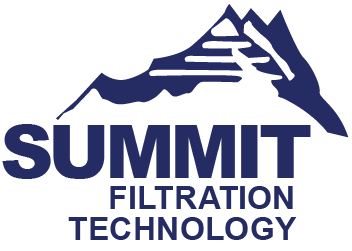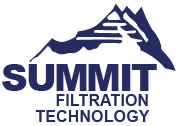Highly Specialized Dust Collection is Imperative
Thermal spray may be an effective method for coating a variety of metal substrates, but the very nature of its process requires an extensive dust collection and ventilation system … a system flawless installed and supported by a serious commitment to its maintenance.
The subvariety types within any of the four main thermal spray varieties — electric arc spray, flame spray, high velocity oxy-fuel spray, or plasma spray — can call for special air filtration and contaminant handling in themselves, as well.
In all cases, the coating material, whether initially in the form of a powder or wire, when melted and applied to the substrate surface creates dangerous particulates. The high-velocity air stream used in the application process purely elevates the level of danger.
Particulates from the thermal spray process are capable of causing disastrous employee health and safety issues, and can also lead to an explosion or fire.
Summit can help you to navigate and address the serious list of hazards that come with thermal spray.
Factors to Consider When Designing a Thermal Spray Ventilation System
When it comes to compliance and safety, you must ask all of the pertinent questions and consider all of the factors making your facility unique. A ventilation system can only be as effective as the planning behind it. The process may be complex but the result will be invaluable.
- What type or types of thermal spray will you be conducting in your facility?
- Do any of your workers have allergies to the metals that will be sprayed?
- What will your annual consumption of sprayed material be, based on current projections?
- What are the dimensions of the spray booth or booths you will be using?
- Is your fire extinguishing system adequate for potential thermal spray-related fire or explosions?
- Which option is the most energy-efficient and cost-effective?
Thermal Spray Dust Maintenance Tips
Regular filter maintenance will keep your air clean and keep your dust collection system running smoothly for years to come.
In addition to filter maintenance …
- Empty the bin: The waste storage container attached to your collector must be emptied regularly, or you risk clogging the system.
- Don’t broom – Vacuum: All dust on the floor and surfaces of your facility should be collected to prevent it from entering the general atmosphere and your equipment. Use a vacuum to remove dust as a broom will disperse particles into the air.
- Keep hex chrome where it belongs: Clothing that will be worn home should never be exposed to toxic dust. All clothing or coverings worn around hex chrome or other toxic dusts should be left and laundered at the workplace, or properly disposed.
There should be no eating, drinking, smoking or use of cosmetics near toxic dusts.
Elements of the Thermal Spray Process Creates a Fire and Explosion Hazard
Several types of metal dust associated with the thermal spray process are combustible. Untreated, it creates a risk of explosion in the workplace.
Find out if your dust is combustible and how it can explode.
What Makes Thermal Spray Contaminants Such an Employee Health Hazard?
Contaminants produced by thermal spray are often smaller than a micron, meaning they can easily find their way into a worker’s body and cause serious health consequences.
Hexavalent Chromium (or hex chrome) is produced when heating metals that contain chromium. It is a carcinogenic substance that can cause relatively minor injuries, such as irritation to the upper respiratory system, eyes and skin. However, it has also been known to cause lung cancer and other serious medical problems in cases of long-term exposure.
Nickel is a commonly encountered pollutant in thermal spray. While it can affect the eyes and skin, it’s more damaging effects come from breathing it. Reactions to nickel exposure may include nausea, chest tightness, fever, allergic reactions, or even serious lung conditions like fibrosis and pneumoconiosis.
Cobalt exposure can lead to skin conditions like dermatitis and eczema, respiratory irritation and fibrosis, and thyroid issues.
Copper can create irritation in the eyes and lungs.
Aluminum dust can lead to a variety of respiratory and pulmonary conditions.

